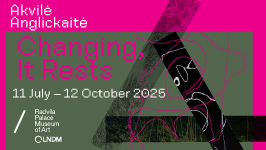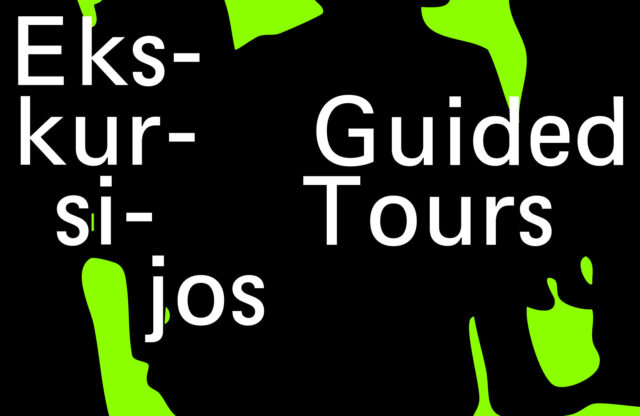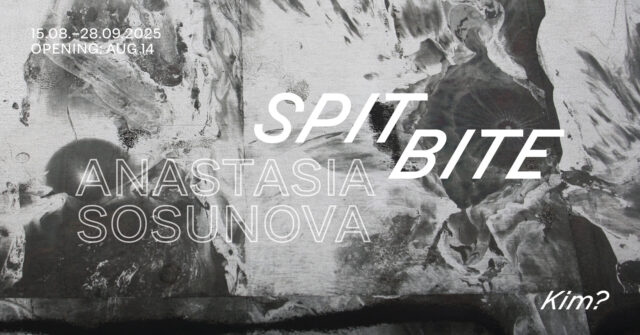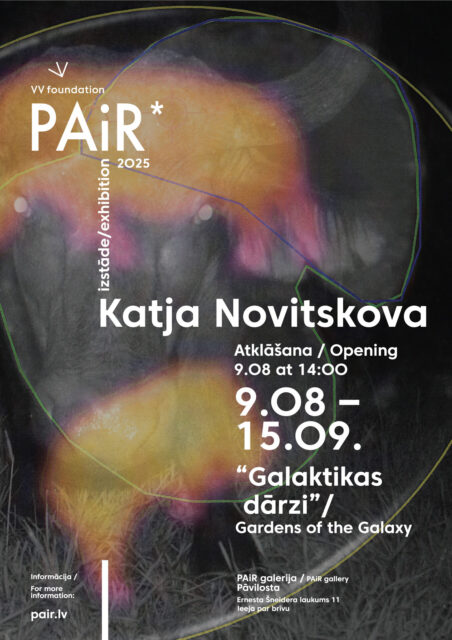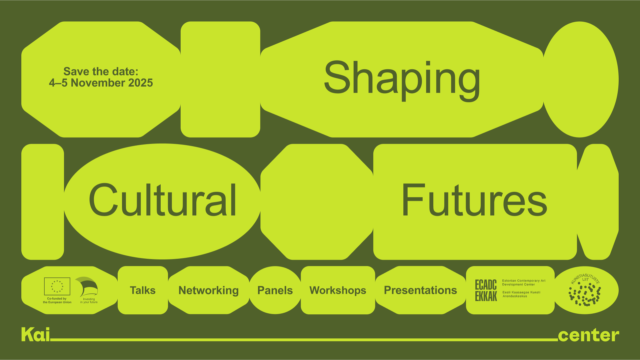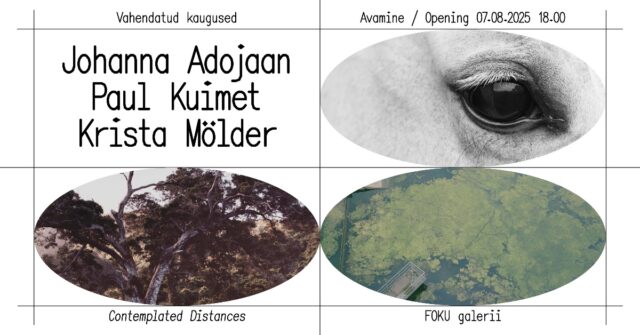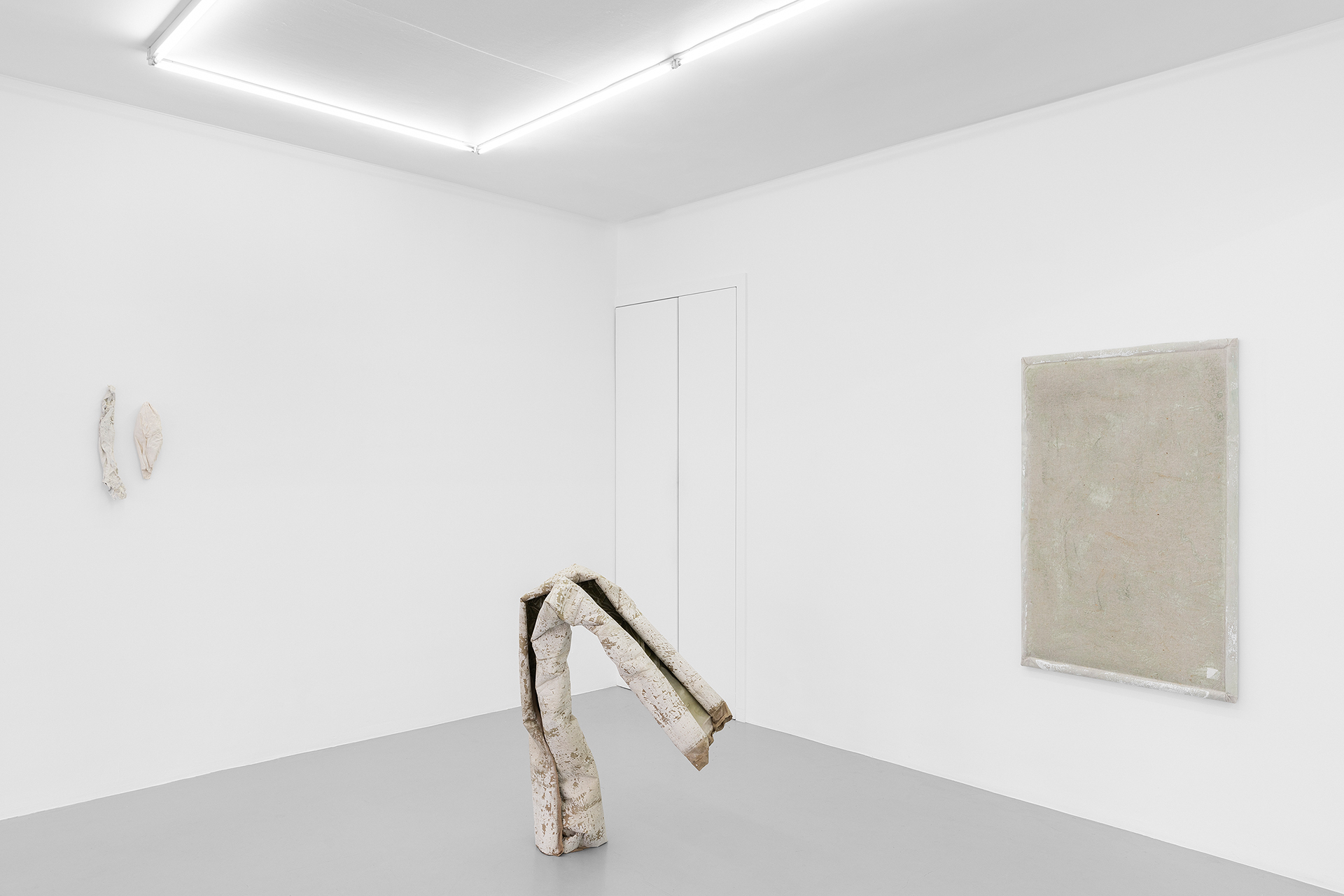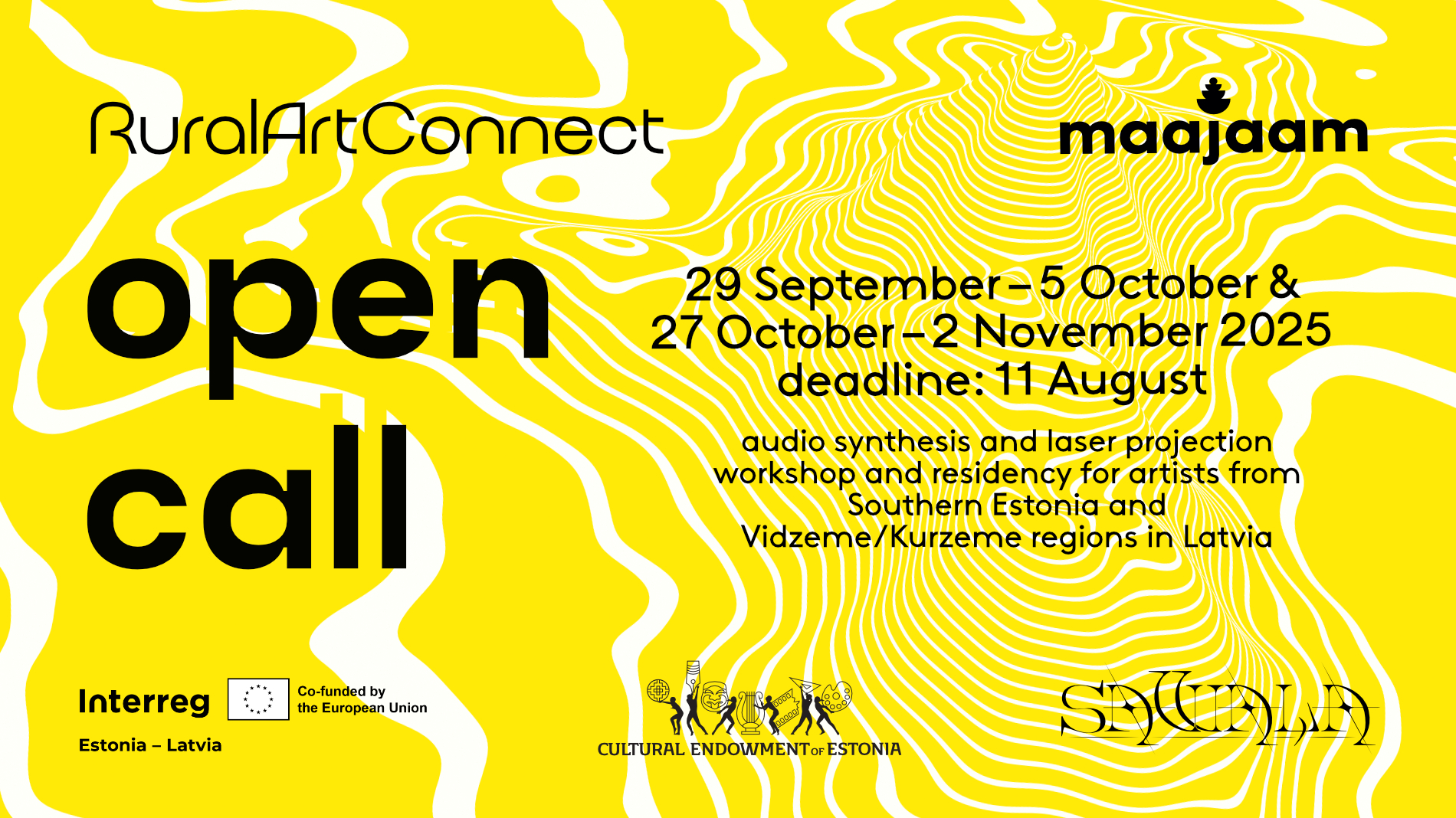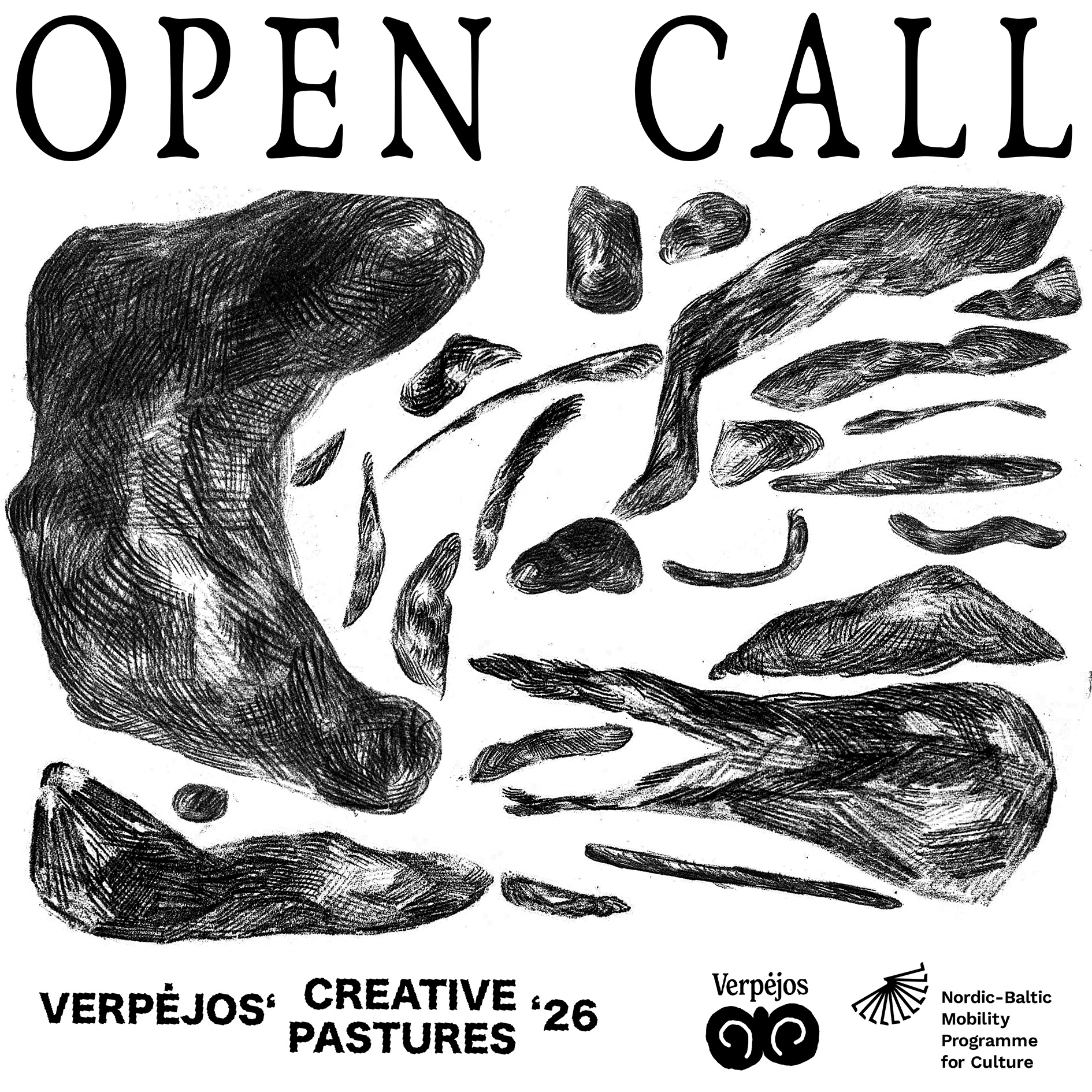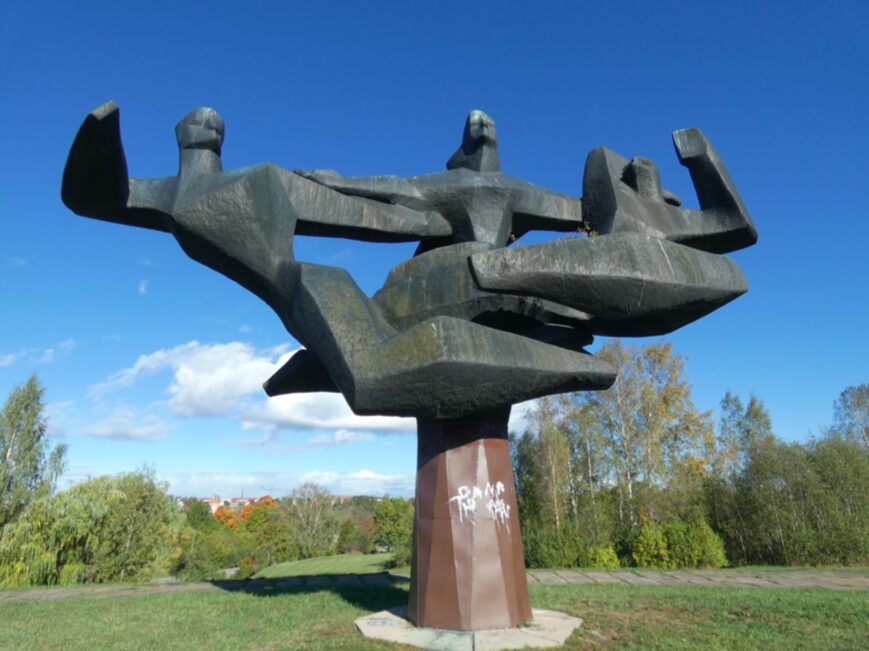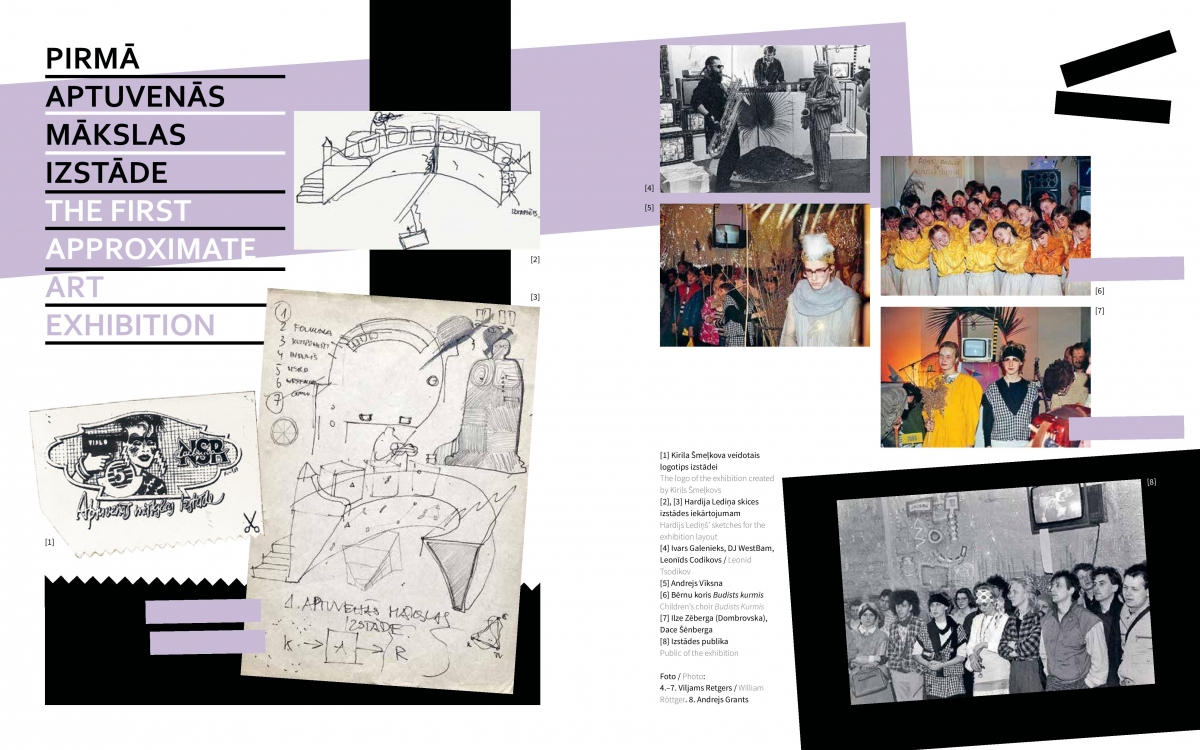 In 2015, the Latvian Centre for Contemporary Art (LCCA) ‘celebrated’ the year of Hardijs Lediņš. But it would seem that their celebrations are continuing. In the autumn of 2016, the LCCA released a sizably dense book entitled Workshop for the Restoration of Unfelt Feelings. Juris Boiko and Hardijs Lediņš[1] before an exhibition of Juris Boiko’s works[2] opened at the Latvian National Art Museum in December, an artist whose close collaboration with Lediņš led to the more important part of his legacy being created.
In 2015, the Latvian Centre for Contemporary Art (LCCA) ‘celebrated’ the year of Hardijs Lediņš. But it would seem that their celebrations are continuing. In the autumn of 2016, the LCCA released a sizably dense book entitled Workshop for the Restoration of Unfelt Feelings. Juris Boiko and Hardijs Lediņš[1] before an exhibition of Juris Boiko’s works[2] opened at the Latvian National Art Museum in December, an artist whose close collaboration with Lediņš led to the more important part of his legacy being created.
When Līga Lindenbauma curated an exhibition at the National Library of Latvia dedicated to Lediņš heritage[3] as a culminating event near the end of 2015, an extensive review about Lediņš heritage and his role in Latvian art history was written by the art historian Stella Pelše and published by Echo Gone Wrong[4]. Climbing on the shoulders of giants here, I want to spare you an introduction to the phenomena of the Workshop for the Restoration of Unfelt Feelings (henceforth NSRD) and its core authors Juris Boiko and Hardijs Lediņš, and dedicate my attention in the following solely to a recently published book about the NSRD, and take for granted that everybody already knows about the NSRD. But, before doing so, I would like to point out that my knowledge of Latvian art history is rather sketchy, at most. So the following article is a sincerely curious glimpse, and in all honesty, a jealous account by an incompetent neighbour.
NSRD is a well-stitched book
So, to give an answer to the question “What is the NSRD?” raised in the title of this piece, the NSRD is a very well-stitched book. At the end of the Lediņš year, Pelše expressed concerns that his heritage of approximate art –the ultimate core of postmodern avant-garde and the beginning of Latvian contemporary art – might be turned into an “ossified dogma”. Being an experienced art historian at the same time, she had to grant the fact that a canonical interpretation of Lediņš’ heritage was inevitable, but she pleaded that “The only reason why such a move can be justified is that the ‘canon’ is something to be studied, learned from and understood, and by getting to know Lediņš legacy the possibility that its message(s) will live on in work of future generations will increase.”[5] Towards the end of the Lediņš year, Pelše’s concerns might have been justified, but with the current NSRD book, which gathers a remarkable amount of original papers, the tools of reinterpretation are handed over together with the established canon. So, without further adieu, let’s have a look at the canon and begin the undermining of it.

NSRD is a chronology
NSRD is a chronology of collaborative artistic events. The book starts with a chronology and everything that follows is built upon the events in this chronology. NSRD has a beginning, it begun with music in autumn (1982)[6], and an end point, the exhibition Riga – the Latvian avant-garde (1989), in Berlin. It also has a prehistory, the illegal samizdat publication Horse Dung (1971-1974) that Lediņš and Boiko published while in secondary school[7], and it has an afterlife which is referred to in the book as “NSRD after NSRD”[8].
NSRD as chronology was also a central notion in the 2015 retrospective exhibition Lediņš. Between This and the Other, previously mentioned in the beginning of this article. The exhibition featured objects and documentations of self-value: “Horse Dung” magazines; video documentation and NSRD music releases, all of which were bound together by the chronological lifeline of the NSRD. When seen from this perspective, it seems as though the NSRD’s existence has been its greatest achievement. How come?
The NSRD is an archive
Though its authors would have probably agreed to a claim that the NSRD was some sort of metaphysical embodiment of creativity bound to specific time and space, I would disagree with this. The NSRD is by no means virtual despite the ephemeral character of its creation. This is further exemplified by the fact that there are hardly any reproductions in the book. Rather, the NSRD is very physical – in the form of an archive in the LCCA library. What the NSRD misses are artefacts; pieces of art in museum collections. Paradoxically, at the same time, the archive is the one thing missing from the book. The editorial introduction states that “this book on NSRD and the creative legacy of Lediņš and Boiko is based on their archives. The notebooks, manuscripts, published and unpublished texts, photographs and other materials preserved there … as of 2007… [are] located at the Latvian Centre for Contemporary Art (LCCA).”[9] This fact is pretty much all we get to know about the archive and its content. The only other moment in which the archive gets some attention is in Janis Taurens’ essay Webern, Kenzo Tange and Postmodernism where, due to textological differences, two versions of the manuscripts of the novel ZUN are mentioned in which it is also revealed that Boiko’s archive is still in his daughter’s possession.[10] This piece of information (in the form of a side note) is then followed by a generalised statement: “Like all of the NSRD’s most significant texts, Mogulaks also had several versions whose dates of creation were unclear, as well as a number of related plans that were never realised.”
Why are the physical and intellectual characteristics of the archive important? Well, because of intellectual credit, firstly. The initial idea for a book about NSRD apparently stems from Juris Boiko during the early 2000s. Even though the idea was unrealised back then, the art historian Māra Traumane was said to have been working on an anthology from 2004 to 2011. At the same time, she has also been working on her PhD thesis (yet to be finished) on “Interdisciplinary artistic groups in Riga and Moscow.”[11] An article by Traumane is included in the book[12], but it too is only about NSRD and not about her work on the archive. If I didn’t know any better, I would say that it looks as though Traumane worked with the material for many years before two new colleagues came along and suddenly put this book together rather hastily. When I use the term ‘credit’ here, I am less concerned about somebody being left without recognition for their work, but more about wanting to know who exactly is responsible for knowing what we know in this book!?
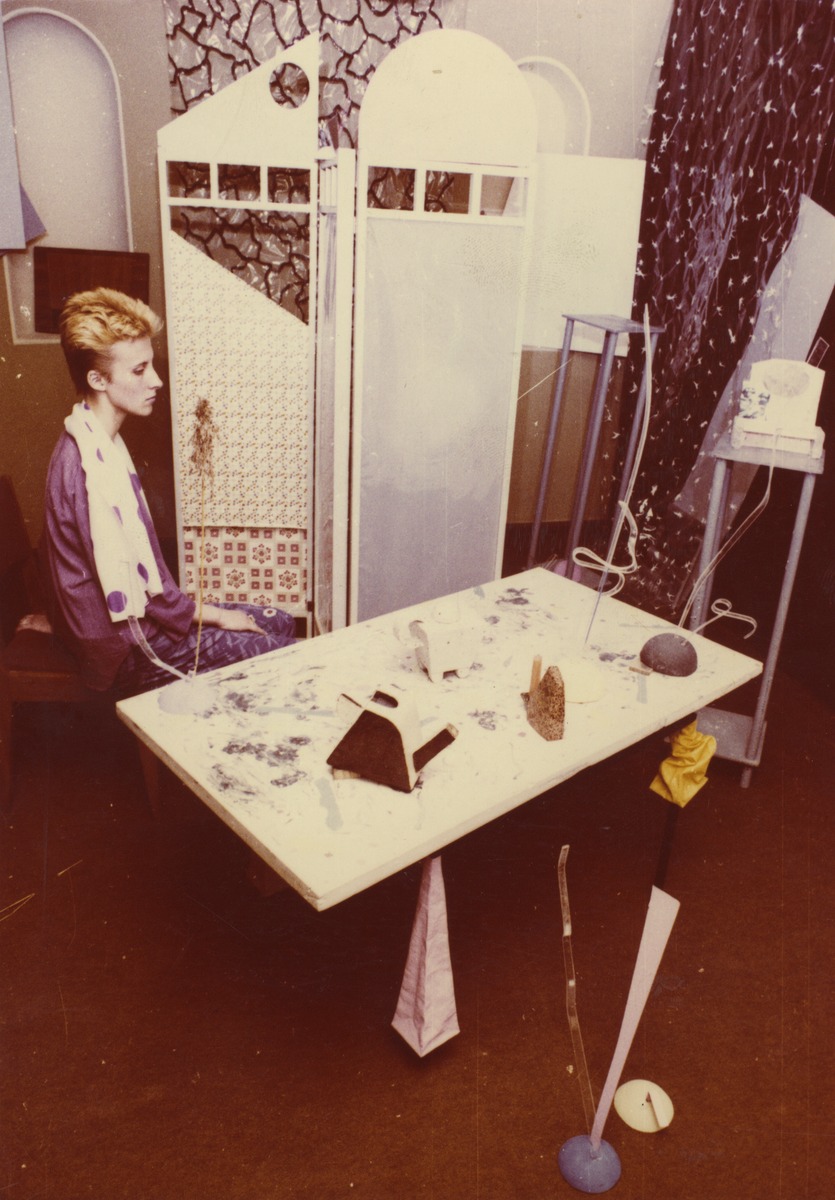
The Wind in The Willows. Exhibition by Juris Boiko, Leonards Laganovskis, Hardijs Lediņš and Imants Žodžiks. 1986. Photo: Imants Žodžiks. Archive of the Latvian Centre for Contemporary Art.
NSRD is a canon
For now, it would seem as though the NSRD isn’t an archive after all. Or at least the editors of the book, Ieva Astahovska and Māra Žeikare, don’t believe it is, and neither do they want the readers to think it is. The book’s most important notion is clearly the chronology that functions as the narrator. Never the less, the book does not consist of a series of numbers, but instead consists of a series of events and descriptions. The dates aren’t actually important; what is important is the succession of the events. The rest of the book is a remarkably vast amount of original texts, featured interviews with their contemporaries and essays written by experts and historians, with a selection of historical photos, some few reproductions and some images of artefacts, all of which are there to confirm the value and role of the artists and their creativity in space and time.
And with that, we arrive at the second reason why the question about the physical archive, as such, is so important. The chronology and the selection of original material is set out to form a canon – this is the NSRD. The editors of the book have remained hidden behind their cutting boards and don’t tell us much about their choices. Instead, they want us to believe that the story we are presented with is an objective narrative. On the opening page, Astahovska and Žeikare call themselves compilers rather than editors. This kind of approach is possible, only because it is the first time a comprehensive history of the NSRD has been put together
So NSRD is a canon; a chronology of canonical events, from which three, namely: Walks to Bolderaja, Binocular Dances and Approximate Art Exhibitions have gained a cult status and deserve separate chapters in the book. This seems to be a more or less adequate editorial decision. The authors of the featured essays are referring to these events the most, so one can guess that these events are what the NSRD is most remembered for by a wider auditory, even though ‘wider’ is a bit questionable. The editors state that “the creative work of NSRD authors became ever more public from 1986.”[13] But it seems safe to say that until this book or, at least, until the Lediņš year, most of this existed in the memory of particular people like the art critic Pēteris Bankovskis, whose included essay states that “The Approximate Art Exhibition at what was then the House of Knowledge, now the Russian Orthodox Cathedral, was their first public manifestation that I had a really good look at. Did I feel it? Did I understand it? Appreciate it? I doubt it. Being a newspaper review writer, I saw the exhibition as ‘just another’ event.”[14]
In a way, one could say that the NSRD book is not about the restoration of unfelt feelings, but is itself the restoration of unfelt feelings.

NSRD “A Walk to Bolderāja”, 1987
NSRD is a workshop for the restoration of unfelt (art-historical) feelings
When Taurens looks for classifications by asking “what are the many unpublished texts created and left to us by Juris Boiko and Hardijs Lediņš both separately and together… Theoretical works? Literary works? Song lyrics… [or] Works of visual art?”[15], and Māra Traumane is trying to construct interpretations that live up to the standards of contemporary art history: “postmodernism tore down the boundaries between ‘high’ art and popular culture, democratising the creative process. This resonated with the NSRD artists’ ‘unprofessional’ experimentation in various genres and forms of art and with their desire, especially Lediņš’, to reach a broader audience with their projects through discos, lectures, concerts and exhibitions.”[16] Surely the chronology put together by Astahovska and Zeikare is trying to be descriptive then, above all. Avoiding the use of any explicit art-historical metalanguage, they collected all available archival info about the events and assembled it into short descriptive texts, where any kind of interpretation about the creative character or meaning of the event gets allocated to somebody else. In that sense, the editors don’t speculate, they cite:
“The Walks to Bolderāja started as the earliest actions of Herdijs Lediņš, Juris Boiko and Imants Žodžiks and their colleagues – journeying along the Bolderāja railway on the border of daylight and darkness, passing through ‘all kinds of nature, through the city, across the level crossing, then through woods, then across endless fields and arriving in an industrial area.’[17] Juris Boiko commented, “in principle it is a ritual but there are no restrictive rules characteristic of ritual. The time, dawn or passing train perhaps only means as much as the camera I have in my bag or the tea in my vacuum flask. The mystical moment in it, if one can say that, is composed of the abstraction of everyday events.”[18]
The Walks to Bolderāja took place once a year, each time in a different month. Seven or eight walks took place from 1980 to 1987, with improvised actions organised on the way…[and] documented through photography, painting… sound and later video recordings.”[19]
But let us not be fooled by the facade of these objective chroniclers, or the claim that they are just compilers not editors! One way or another, it is all just a restoration of unfelt (art historical) feelings.
NSRD is a child of its time
Māra Traumane, describes NSRD as “one of those original phenomena of Eastern European art that are difficult to categorise within the western art canon”[20], and has pointed out a connection between NSRD and the Moscow Collective Actions Group. According to Stella Pelše while writing about Hardijs Lediņš’ exhibition in the National Library of Latvia at the end of 2015, another intriguing parallel next to Traumane’s could be to compare Lediņš with Leonhard Lapin who as an Estonian architect, architecture theorist, artist and poet featuring many similarities with Lediņš.[21] It is my opinion that this parallel should not only be made solely between Lediņš and Lapin, but between NSRD and the whole Tallinn School of Architects, for next to Lapin is also Jüri Okas who is famous for his inexhaustible series of metaphysical architecture photos and is one of Estonia’s first land artists whose works have many similar characteristics to Lediņš Spacial Action 1m x 1m x 1m (1980) a photo documentation of the creation of a hole in the size of a cubic meter, or with the NSRD action A Line in Kurzeme (1983) and A Line on the Seaside (1983), a white line enrolling in the landscape. Also from the same punch is Vilen Künnapu, who would make for an intriguing comparison. He is one of the core architects who wrote articles about postmodern theory, and introduced actual post-modern architectonic vocabulary to the field of Estonian architecture (Tallinn old town features his Flower Shop that follows Robert Venturis’ concept of the decorated shed, word for word). After having been forbidden to work as an architect because of “political disobedience” in the middle of the 80s, next to practicing paper architecture Künnapu considered the career of a writer, publishing absurd short stories. But unlike Lediņš and Boiko, for whom the end of the Soviet Union meant the end of their creative highpoint, in Künnapu’s case and that of many other Tallinn School members, the end of the Soviet Union meant the beginning of a totally new career. Künnapu and Ain Padrik are still considered among Estonia’s most successful architects.
Last remarks
In Estonian art history, the 80s are called the lost decade.[22] The investigations into the Tallinn School by Andres Kurg and Mari Laanemets have slowly been trying to give some more meaning to the decade, but even their interests are much more focused on the 70s. With this in mind, the NSRD book offers hope for new possibilities to review the 80s, finding ways to adequately reconnect this lost decade and place it back into the art history, as opposed to leaving it as the ‘decade of decay’ that one had better not speak about.
Next to this decade no one wants to talk about is also a topic that is avoided in art-historical research like the plague, be it in the 80s or any other decade, and this is the occult or New Age, if you will. Other than Liāna Langa’s short essay Horse Dung and Saliva Are Eternal. The Zen of Hardijs and Juris[23], the NSRD book seems to avoid any serious look on the occult in the practices of NSRD. I do not believe that Boikos’ interest in ‘energetic currents of the space’, that shape his exhibitions, only developed in the 90s. Neither do I believe that Lediņš interest in Künnapu and Padrik’s project for the Arctic Centre in Rovaniemi (a 1984 concept developed in collaboration with later Estonian president Lennart Meri) which had its rooftop oriented towards the North Star[24], revealing the ‘mystic’ behind the term ‘postmodernist’ relied on purely aesthetic or conceptual reasons. But I do believe that Dr. Eneser’s Binocular Eye Dances was, for the authors, far more than just a ‘Dadaistic’ performance, it was an actual occult ritual.
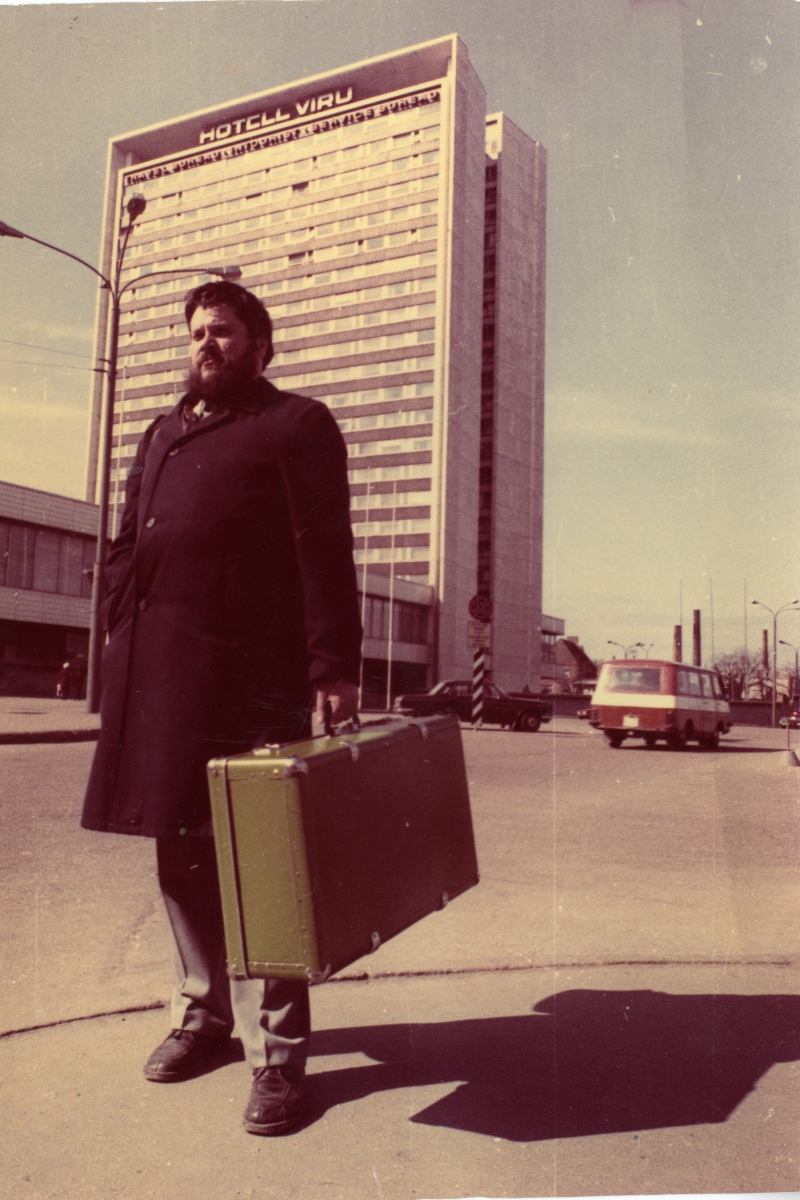
Hardijs Lediņš in Tallin, 1978. Photo: Imants Žodžiks. Archive of the Latvian Centre for Contemporary Art

[1] The Workshop for the Restoration of Unfelt Feelings. Juris Boiko and Hardijs Lediņš, Compiled by Ieva Astahovska and Māra Žeikare. Riga, Latvian Centre for Contemporary Art 2016. (henceforth NSRD)
http://www.lcca.lv/en/news/the-workshop-for-the-restoration-of-unfelt-feelings-juris-boiko-and-hardijs-ledins/
[2] Juris Boiko. Salt Crystals at the Latvian National Museum of Art from 03.12. 2016 – 05.02. 2017. Curated by Māra Žeikare.
http://echogonewrong.com/the-exhibition-juris-boiko-salt-crystals-at-the-latvian-national-museum-of-art/
[3] Lediņš. Between This and The Other at the National Library of Latvia 13.11. – 30.12. 2015. Curated by Līga Lindenbauma.
http://echogonewrong.com/the-opening-of-hardijs-ledins-retrospective-ledins-between-this-and-the-other-in-november/
[4] Doubts of a Post-Modernist Dilettante, Stella Pelše, Published in Echo Gone Wrong 23.02. 2016
http://echogonewrong.com/doubts-of-a-post-modernist-dilettante/
[5] Ibid.
[6] NSRD p. 42.
[7] NSRD p. 23.
[8] NSRD p. 271-288.
[9] NSRD p. 16.
[10] From the press release of Juris Boikos exhibition Salt Crystals (03.12. 2016 – 05.02. 2017.) displayed in the Latvian National Art Museum one could learn that Boikos’ archive is for research purposes only and is currently in the possession of the LCCA.
[11] NSRD p. 16
[12] NSRD: Points of Reference in International art and Theory, Māra Traumane, NSRD p. 302-309.
[13] NSRD p. 21
[14] NSRD in the visual arts and culture landscape in the 1980s, Pēteris Bankovskis, NSRD p. 376
[15] Webern, Kenzo Tange and Postmodernism, Jānis Taurens, NSRD p. 349
[16] NSRD: Points of Reference in International art and Theory, Māra Traumane, NSRD p. 306
[17] Quote from Hardijs Lediņš article Bolderāja Blues, (Published 1984), NSRD p. 139-148.
[18] Ungefähre Kunst in Riga, Echard Gillen, S. 35.
[19] NSRD p. 32.
[20] NSRD: Points of Reference in International art and Theory, Māra Traumane, NSRD p. 302
[21] Doubts of a Post-Modernist Dilettante, Stella Pelše, Published in Echo Gone Wrong 23.02. 2016
[22] Lost Eighties: Problems, Themes and Meanings in Estonian Art on 1980s, Edited by Sirje Helme, Tallinn: Center for Contemporary Art, Estonia, 2010.
[23] Liāna Langa Horse Dung and Saliva are Eternal. The Zen of Hardijs and Juris. NSRD p. 382-385.
[24] Jānis Lejnieks Architecture. Cultivation and Fertilization. NSRD p. 368.




